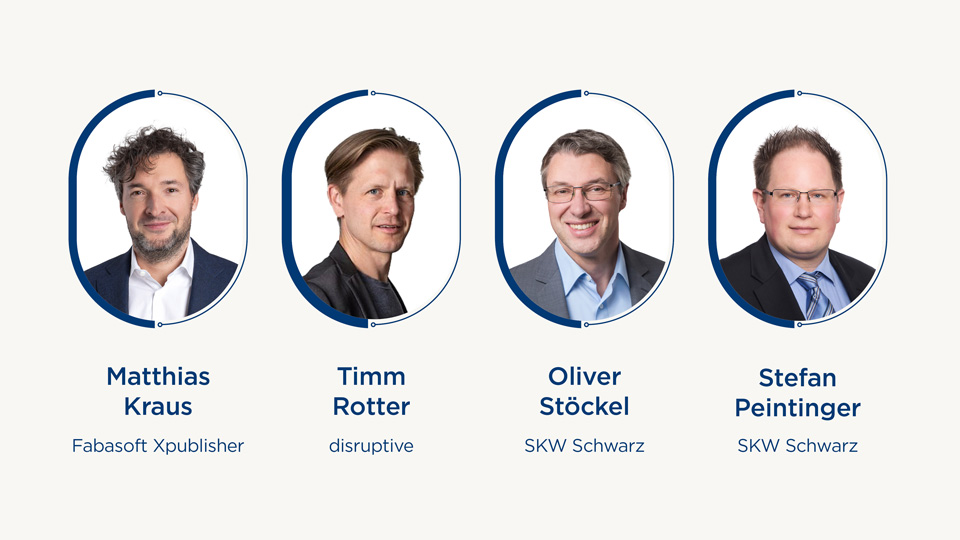Contract management is becoming increasingly digital. Consequently, electronic signatures are also gaining in importance. What are the advantages of digitizing the signing process? What types of signature are there? And how secure is the electronic signature?
Advantages of the digital signature
The main reasons for introducing a digital signature in a company are to speed up the signing process and minimize risk. For reasons of efficiency as well as security and data protection, it is important to avoid so-called media discontinuities. These occur, for example, when those responsible print out the finished contract on paper, sign it and scan it again – or when they send it to the contractual partner by e-mail. The consequences are an insecure exchange of data and a considerable additional effort for all parties involved.
Using contract management software with an integrated digital signature provides companies with the following benefits:
- Minimization of manual effort
- Increase of traceability as well as own security standards
- Reduction in the time it takes to conclude a contract
What types of digital signature are there?
For the electronic signing of contracts, the EU has established uniform regulations for digital transactions throughout Europe with the eIDAS Regulation (electronic IDentification, Authentication and trust Services). The regulation (Regulation (EU) No 910/2014) governs the conditions under which electronically transmitted and signed documents acquire the same legal status as those on paper. In simple terms, the more security criteria the electronic signature fulfills, the greater the legal validity and evidential value of the signed document.
For this purpose, the EU defines three levels of electronic signatures:
- Simple electronic signature (SES)
- Advanced electronic signature (AES)
- Qualified electronic signature (QES)
1. The “simple electronic signature”
Scanned in, a handwritten signature is considered a “simple electronic signature” (SES) according to the eIDAS Regulation. An e-mail signature or a mouse click on a website (for example: “I accept”) also count as such. Since there is no way to identify the person signing with these approaches, the SES has little chance of success in legal disputes.
2. The “advanced electronic signature“
Encrypted – and thus much more secure – the handwritten signature corresponds to the "advanced electronic signature" (AES). It has to be explicit, forgery-proof and verifiable. Encrypted transmission ensures unique identification of the signing party and protects the document from unauthorized access or changes. Due to its high security standards, AES is ideally suited for digitally signing most business agreements, taking into account the currently valid formal requirements.
The contract management software Fabasoft Contracts includes a native advanced electronic signature according to the eIDAS regulation. The Fabasoft Secomo security architecture is used for this purpose. True end-to-end encryption protects sensitive data end-to-end, from the workstation or mobile device. The secret key prevents unwanted access. The signing process is media-interruption-free and device-independent, without the involvement of third-party providers. This contributes to the special security of the Fabasoft Secomo encryption standard.
3. The “qualified electronic signature“
According to the eIDAS Regulation, the “qualified electronic signature” (QES) is the most secure form of digital signature. It meets all the requirements of the AES, with the difference that signers must prove their actual identity with a qualified certificate (citizen card, cell phone signature or similar). This gives the qualified electronic signature a special legal status and, according to the EU regulation, it is considered equivalent to the handwritten signature within the EU member states – with a few exceptions *).
Fabasoft Contracts offers the full integration of a qualified electronic signature in addition to the system's own advanced electronic signature. Here, Fabasoft cooperates with the independent Austrian certification authority primesign. Unlike when third-party providers are commissioned, the QES is embedded directly in the contract management software, which means that the digital documents do not leave the secure cloud at any time. In this way, the signing process is secure and free of media breaks for all internal and external partners.
On to the digital signature
The use of the advanced and qualified electronic signature brings many advantages in contract management: In addition to a simple, fast and seamless signing process, companies benefit in particular from state-of-the-art encryption technologies. These make digitally signed contracts traceable, forgery-proof – and raise the level of security far above that of paper.
*) When a qualified electronic signature cannot replace a handwritten signature varies depending on national law and must be clarified individually in case of need.




